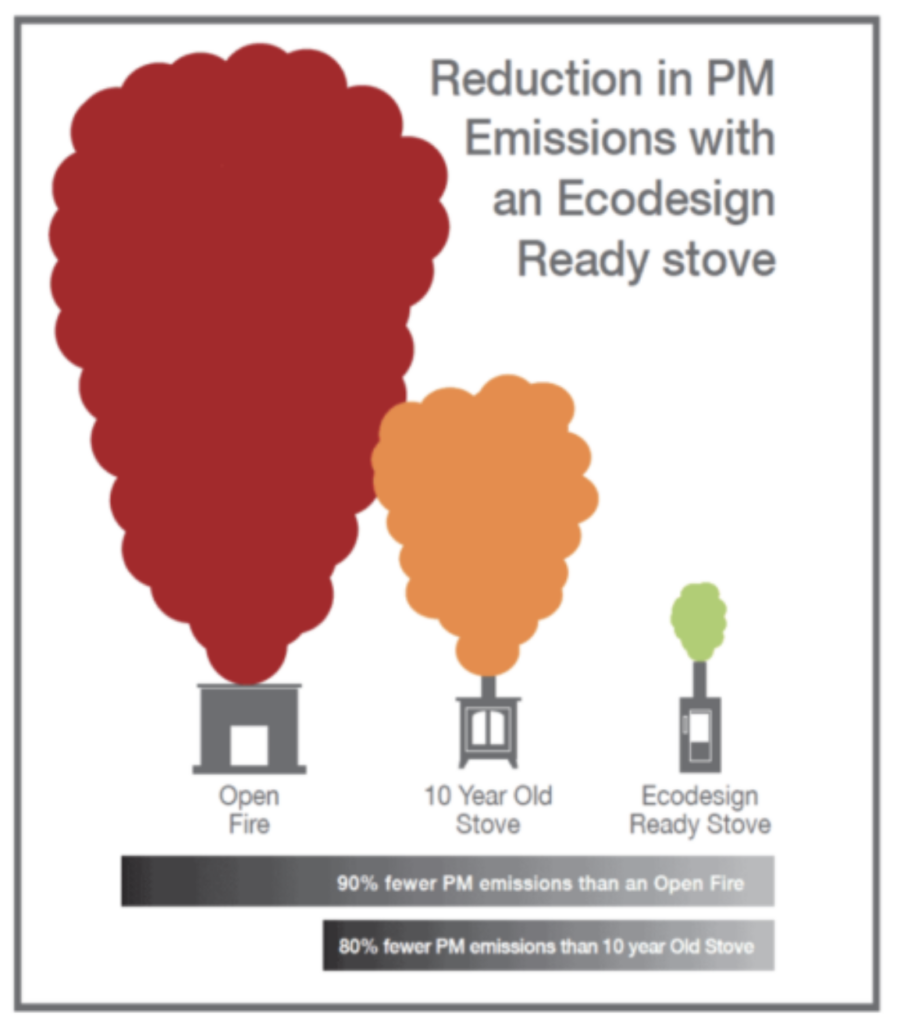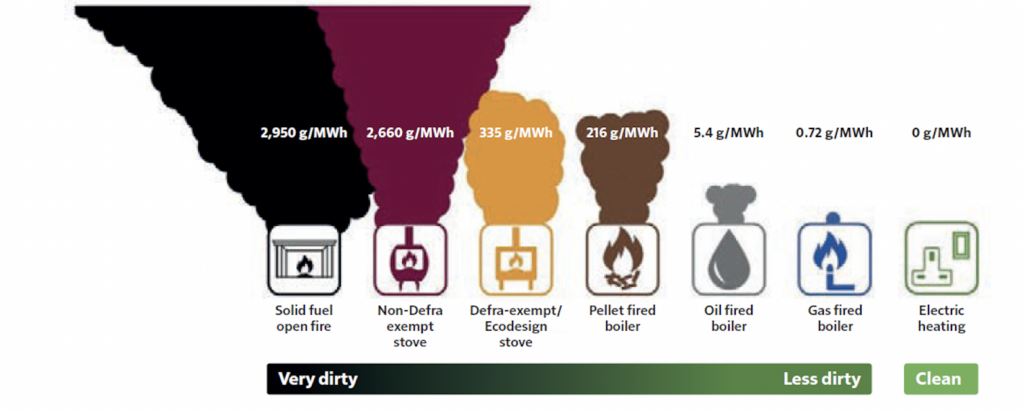It has recently been reported in the media that a wood-burning stove produces an incredible 450 times more pollution than gas heating.
Despite their environmentally friendly credentials, wood-burning stoves have sadly become a target for ill-informed and misleading reporting.
Are Ecodesign Stoves Environmentally Friendly?
Absolutely. We have spoken at length about the environmental benefits of burning wood on an Ecodesign stove. The diagram below explains just how green stoves have become through advances in stove design and technology.
Wood is also a renewable energy source.

Is “450 times more polluting than gas heating” accurate?
No. It’s very much a case of comparing apples with bananas. In 2021 DEFRA produced a graphic, which outlines the g/MWh (Grams of CO2 produced per Megawatt-hour) of various heating appliances. A megawatt-hour (MWh) is equal to 1,000 Kilowatt hours (Kwh).
This figure of “450 times more polluting” was taken from the DEFRA graphic (below) where the grams of CO2 produced per Megawatt-hour of an Ecodesign stove was simply divided by that of a gas-fired boiler at the point of use.

The maths – 335 g/MWh (Ecodesign stove) divided by 0.72 g/MWh (gas boiler) gives a figure of 465.277.
Here is where confusing and inaccurate information arises. Below are a few points to consider, which explain why this headline figure of “450 times” is misleading.
A gas boiler is on for longer – A gas boiler heats the whole house and also the water. In comparison, a stove only heats one single room in a house and so is in use for a fraction of the time that a boiler would be.
A fairer comparison would be to compare actual MWh actually burned each year.
Burning wood is renewable – gas is a fossil fuel – One key point which needs to be appreciated is burning wood is renewable whereas gas is created from fossil fuels. The extraction of gas is not particularly environmentally friendly. Burning wood on an Ecodesign stove will actually emit less CO2 than if the wood (tree) was left to rot on the floor of a woodland.
Burning wood is not created equal. Emissions from a stove will vary based on the type of wood used and how well-seasoned it is. Wet wood, which has a moisture content of over 25% will produce more pollution and emissions when compared to burning correctly seasoned wood. The figure above quoting 335 g/MWh gives no indication if the wood is wet or dry or what condition the stove is in.
Stoves have advanced in recent years in terms of efficient design and technology, which makes them an excellent choice for those that wish to enjoy keeping warm in an environmentally friendly way without being subject to sharp gas and electricity price hikes. This is one reason why we have and continue to see a sharp increase in the demand for wood-burning stoves.








